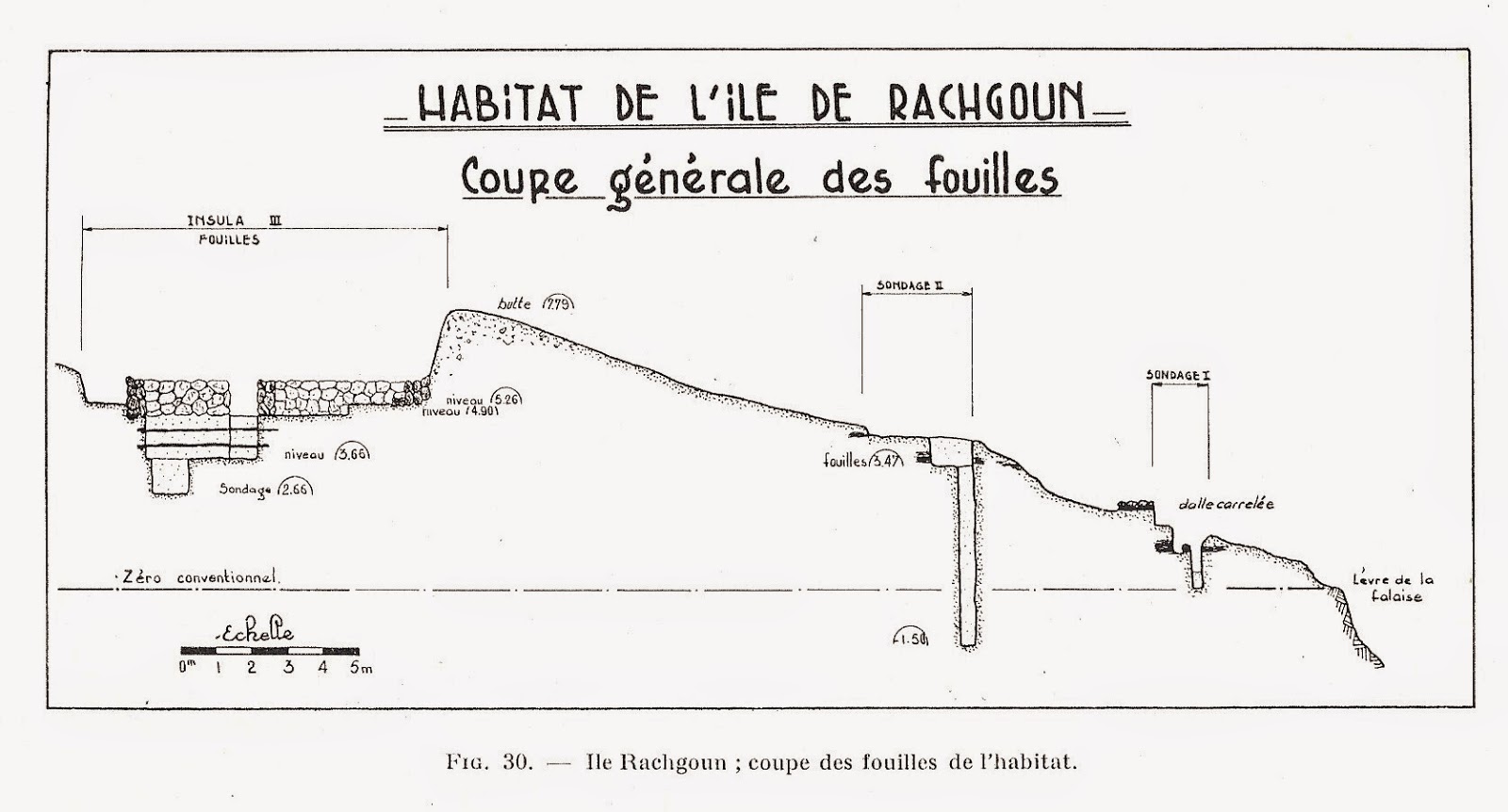RACHGOUN
The
Phoenicians provided the North-African coast with dozens of strongholds and
anchorage places. One of them was called Rašgun or Akra. Nowadays it is named
aš-šakur or Argikule.
Ps.Scylax
(111) mentions in the 4th century BC: “facing the river (=Sigi), the
island of Akra island
of Rašgun , distant 1700 metres from
the shore in front of the river Tafna in western part of Algeria Cape of Siga Algeria Iberian Peninsula . There were 114 graves
uncovered. Memorial stones (with inscriptions) are lacking. Jars with shoulder,
funerary urns, dishes with a large rim, datable to the 7th century
BC, were found mixed with handmade pottery, abundant in this burial context. On
a scarab we find the hieroglyphs nb nfr sw (-shou, son of Râ) from the 7th
century BC. The graves also yielded a number of weapons, like spearheads,
amulets and silver jewellery from the 7th-6th century BC.
Child burials were found as well: the small bodies were placed in natural
cavities of the rock, the head always covered with a large stone. This habit
has a similarity with some burials in Phoenicia Rachgoun Island
See: G.Vuillemot,
Réconnaissances aux échelles puniques d’Oranie, Alger, 1962.
See :
E.Lipinski, Itineraria Phoenicia ,
OLA 127, Studi Phoenicia
XVIII, Leuven , 2004.






Geen opmerkingen:
Een reactie posten